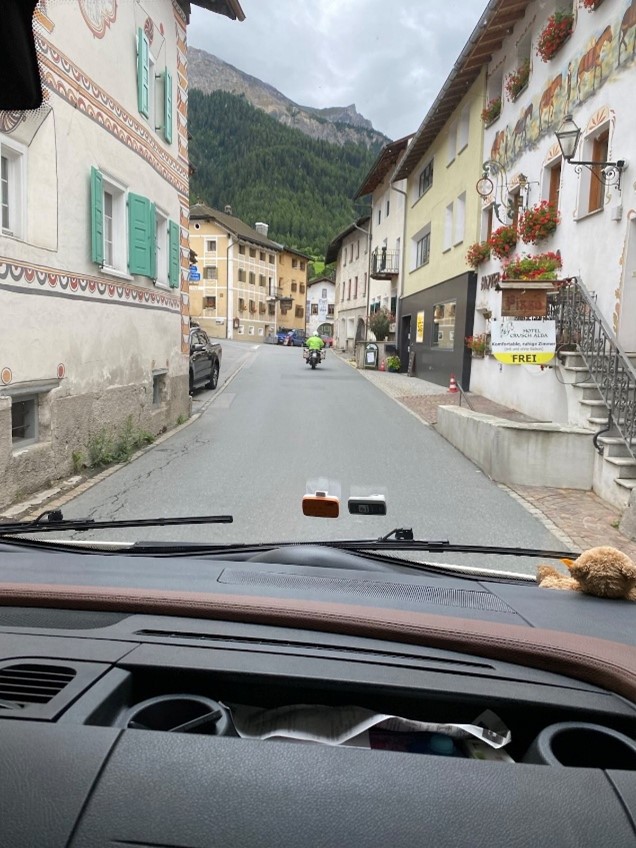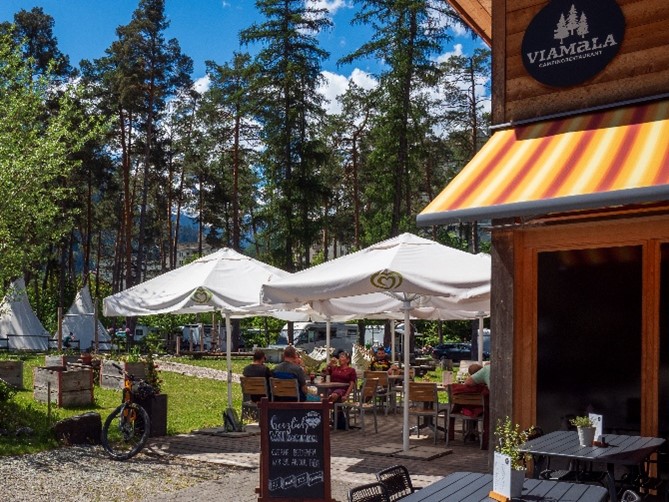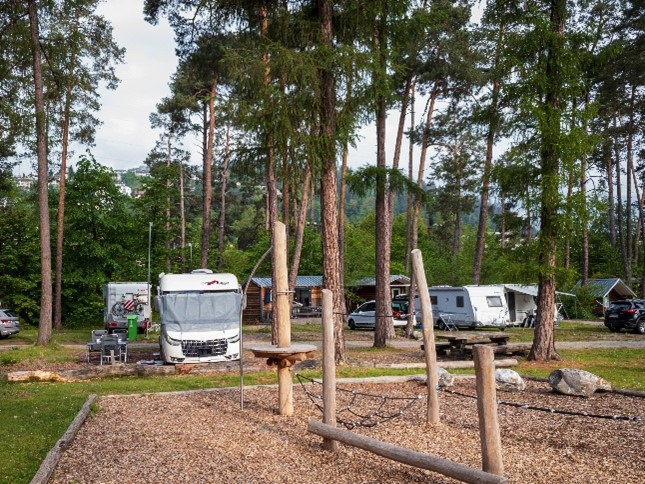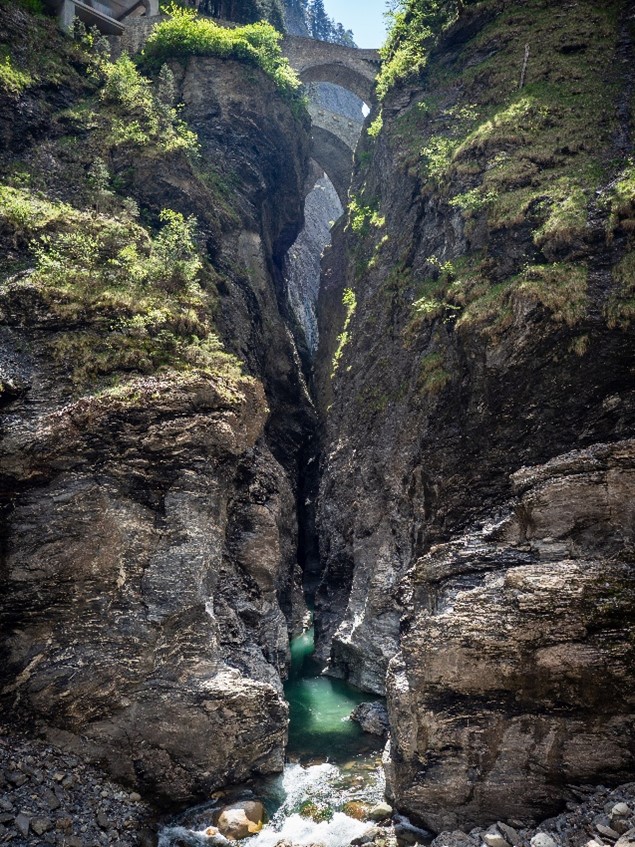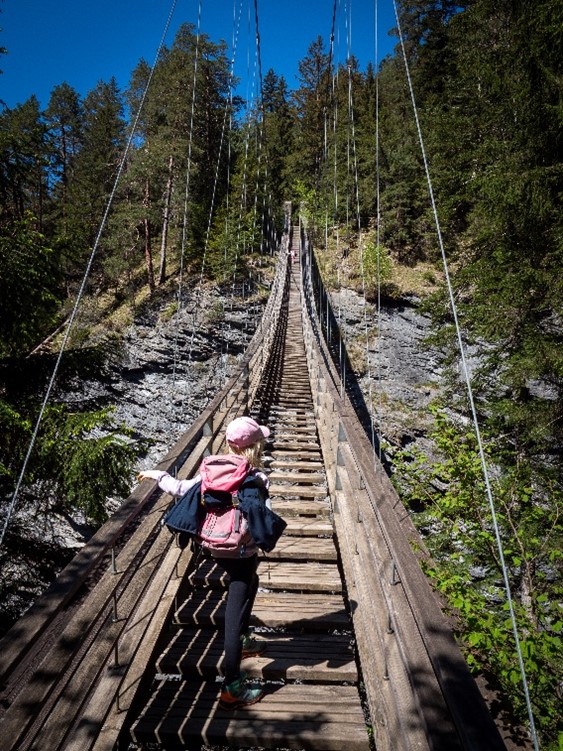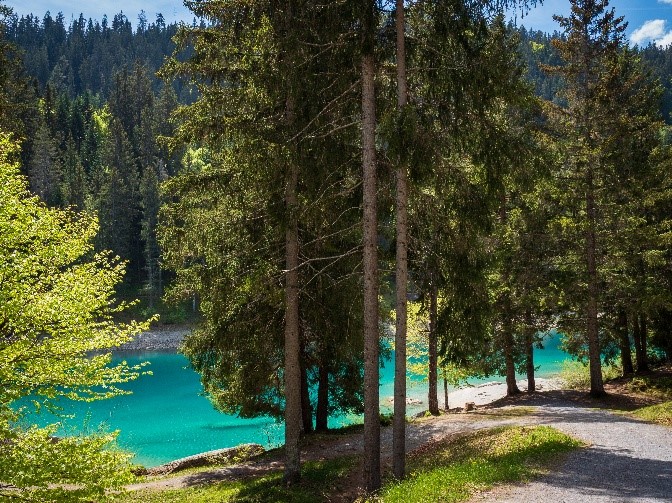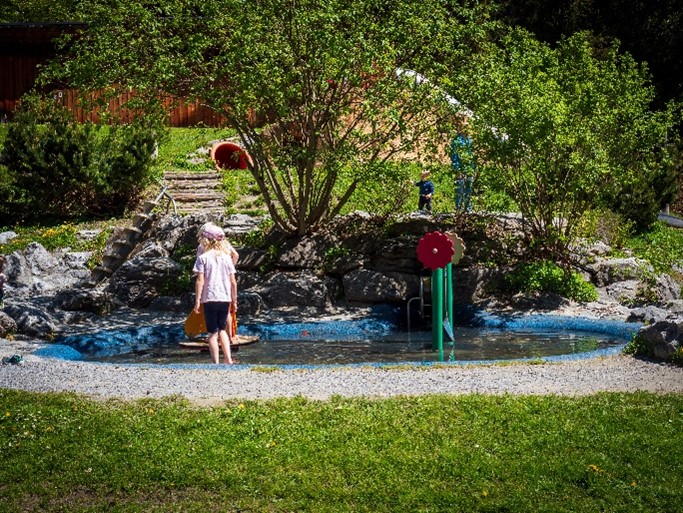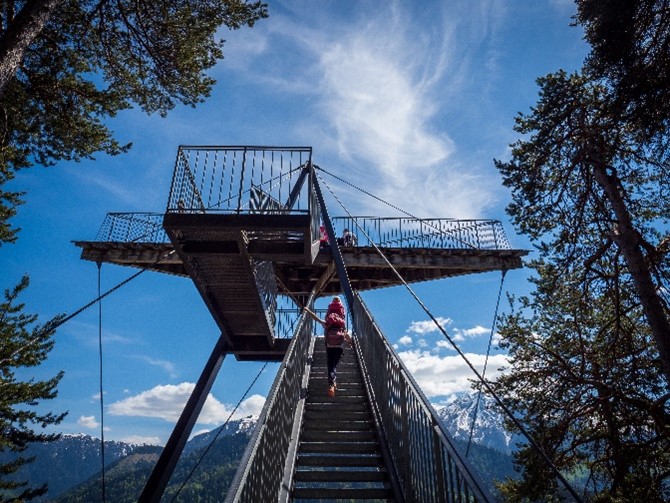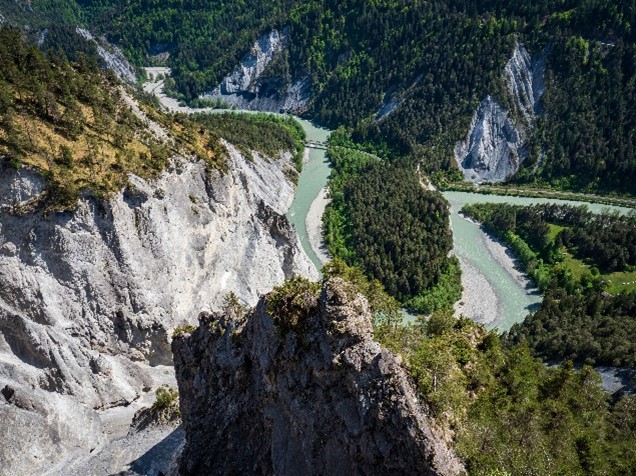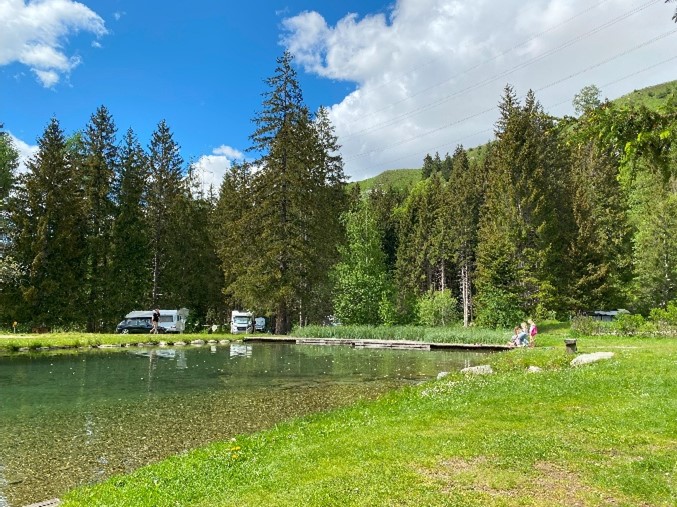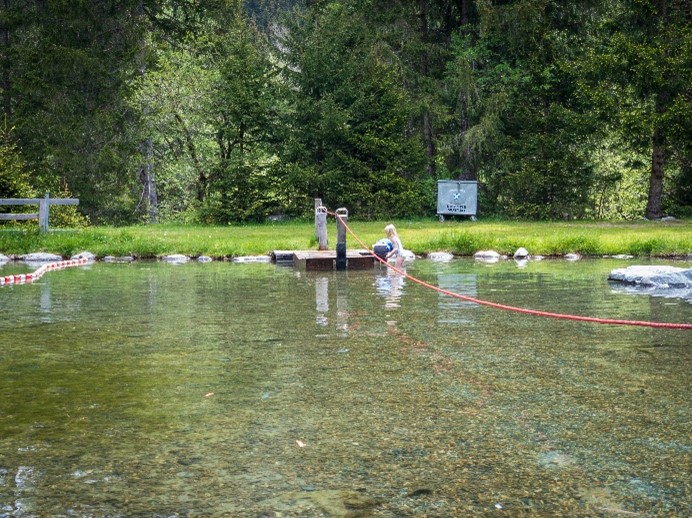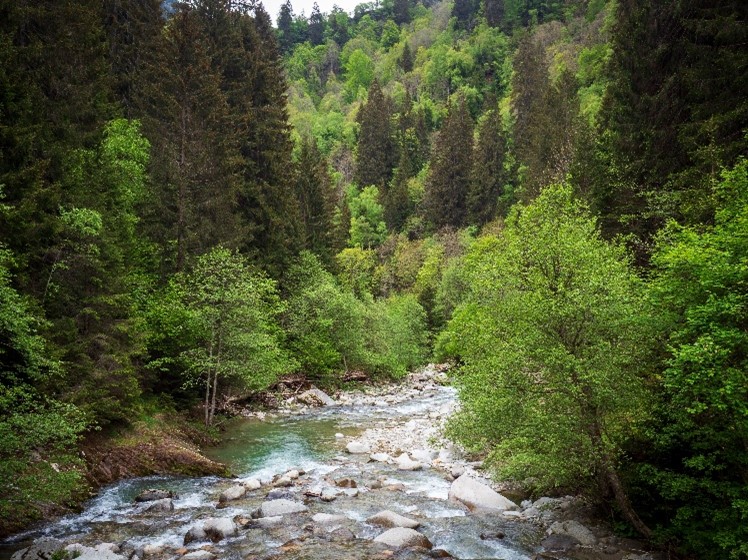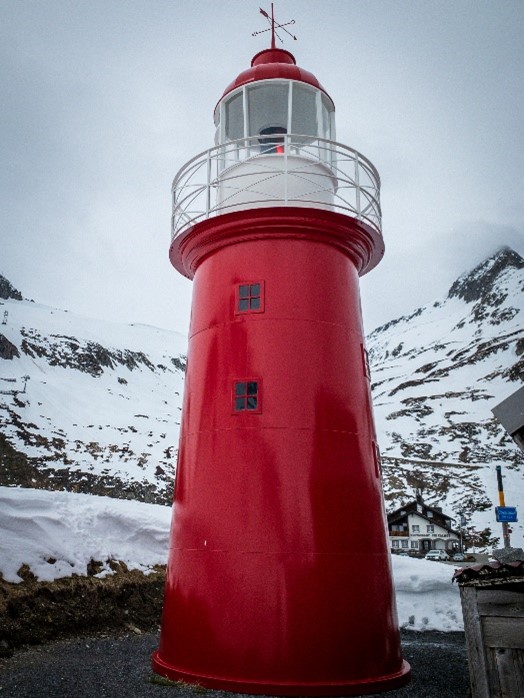TIME OUT IN GRAUBÜNDEN
By motorhome to the sources of the Rhine
Our customer Ulli was travelling in Switzerland with his family. In his detailed travel report, he not only describes his route, but also gives us important tips on travelling as a family and why a Carthago is ideal for this.
We traditionally spend the Ascension weekend on tour with a reduced crew. That means: our two daughters, aged six and eight at the time of this trip, and me, their dad. Mum is travelling with her hiking group - so we set off alone in our Carthago chic c-line I 4.9 LE. But don't worry, we're a well-rehearsed team! This time, my daughters take it in turns to sit in the passenger seat and help us navigate through the narrow streets of the Grisons mountain villages.
And to get straight to the point: Nobody needs to be afraid of travelling through the Alps in a motorhome off the main transit roads. The combination of Sprinter drive head and AL-KO rear axle ensures directional stability and manoeuvrability that make our Carthago look much smaller than it is.
Our destination this weekend is the two headwaters of the Rhine - Vorderrhein and Hinterrhein - in the Swiss canton of Graubünden. Readers will forgive us for summarising two Ascension weekends (2023 and 2024) here.
Technical tip: Travelling with the Carthago chic c-line I 4.9 LE
Anyone travelling through the Alps with a larger motorhome often asks themselves the question: How manoeuvrable is my vehicle on narrow roads or when manoeuvring on difficult parking spaces?
Our Carthago chic c-line I 4.9 LE is based on a Mercedes Sprinter drive unit with automatic transmission and AL-KO rear axle - a combination that proves to be ideal, especially in mountainous terrain.
🔹 Tracking stability & manoeuvrability: Despite its size, our motorhome is surprisingly agile. The combination of Sprinter chassis and AL-KO rear axle ensures precise road holding, even in narrow lanes or winding roads.
🔹 Automatic torque converter with torque boost:
A particular advantage of the Mercedes automatic torque converter is the smooth power transmission - especially in comparison to automated manual transmissions or dual-clutch transmissions, which often work unevenly in such situations.
✅ No clutch wear when pulling away - ideal for frequent stop-and-go manoeuvres or manoeuvring
✅ Smooth, precise manoeuvring - even on steep and slippery surfaces
✅ Torque boost: When pulling away, the torque of the engine is briefly boosted by the torque converter, allowing the vehicle to accelerate powerfully but smoothly from a standstill. This is a great advantage, especially on hills, because you don't have to work with a slipping clutch.
🔹 Manoeuvring with assistance: Our daughters have proven to be perfect guides! A good tip for all motorhome drivers: use your fellow travellers as "ground crew" to keep the best overview when parking.
📌 Conclusion: Even larger motorhomes are ideally suited for alpine routes - with the right technique, a little patience and a well-coordinated team on board, nothing stands in the way of your adventure! 🚐⛰️
Station 1: Thusis and the Viamala Gorge
Our first overnight stay takes us to the TCS campsite in Thusis, close to the legendary Viamala Gorge carved into the rock by the Hinterrhein. Thusis is an ideal stopover for travellers heading south who avoid the Gotthard route and take the A13/San Bernardino. The campsite is close to the motorway, but before the winding mountain road towards Ticino.
Nestled between tall conifers and with mulched pitches, it has a Scandinavian feel. As usual, the TCS offers high quality with well-kept sanitary facilities and a small self-service restaurant with a terrace. For those in a hurry, there are stop-and-go spaces in front of the barrier for travellers who only want to sleep for a few hours. However, we recommend taking your time and spending at least one night here.
Our pitch is right next to the playground - to the delight of the children. After a relaxing evening, we set off the next morning for the Viamala Gorge. We walk from the campsite to Thusis railway station, from where the Postbus takes us to the visitor centre in about five minutes (tip: take the campsite's guest card with you - there is a significant discount on admission!)
The Viamala Gorge impresses with its steep, sometimes overhanging rock faces and deeply incised watercourses. The descent is also suitable for children, but a certain level of fitness is required, as you will have to climb up again later.
Originally, we wanted to hike along the Veia Traversina over the Traversiner suspension bridge back to Thusis. However, this path can be slippery and challenging, especially in wet conditions, which is why it is only recommended for older, sure-footed children. We therefore opt for an alternative route: we take the bus one stop further to the Rongellen junction and hike safely from there to the Traversiner Steg. This impressive (staircase-shaped!) suspension bridge at a height of over 70 metres is a real highlight and spans a wild ravine.
Back in Thusis, another highlight awaits all mountain bike fans: the Thusis Trail Centre with eight different trails for different levels of difficulty. Entry is free - a perfect opportunity to improve your riding technique!
Station 2: Flims and the Rhine Gorge
We leave Thusis and follow the Hinterrhein as far as its confluence with the Vorderrhein at Reichenau. From there, we change to the main road 19 and cycle westwards along the Vorderrhein to Flims.
Here we again head for a TCS campsite that has only recently been taken over. The cleanliness and friendliness of the team are already up to the usual TCS standard, but the site is still characterised by its former permanent camper days. Tourist pitches are rather rare - especially in the upper area near the reception. There is a second area further down by the sports centre, but it looks more like a temporary extension.
After parking, where my daughters routinely instruct me, we explore the area the next morning. Our first destination: the turquoise-coloured Lake Cauma. While we reach it via a well-maintained hiking trail, you can also take a small inclined lift down from Flims-Waldhaus. The lake is not only beautiful, but also a popular swimming lake - unfortunately the restaurant is currently being renovated, but the kiosk is good enough for an ice cream.
From there, we hike on to the "Il Spir" viewing platform, which offers a spectacular view of the Rhine Gorge (also known as the "Swiss Grand Canyon").
Station 3: Disentis - pure nature and Rhine gold prospecting
Our journey along the two sources of the Rhine takes us on to Disentis. The TCS campsite in Disentis lies in a picturesque valley directly on the bed of the Vorderrhein. If you are looking for a real break, this is the place for you.
The choice of pitches is huge: from easily accessible meadow pitches to winding plots under trees by small lakes. A particular highlight is the large natural swimming lake with water playground, which is perfect for children.
If you fancy a hike, you can explore the longest suspension bridge in Graubünden high above the Rhine Gorge or take the Matterhorn-Gotthard railway over the Oberalp Pass. Incidentally, this is probably the only lighthouse in the Alps, a replica of the Dutch lighthouse at the mouth of the Rhine.
Conclusion
Our short round trip along the two sources of the Rhine ends here. Graubünden inspired us with its breathtaking nature, impressive gorges and family-friendly activities. For us, this trip was the perfect mix of adventure, relaxation and discovery.
Whether as a destination in its own right or as a relaxing stopover on the way south - Graubünden is always worth a trip!

